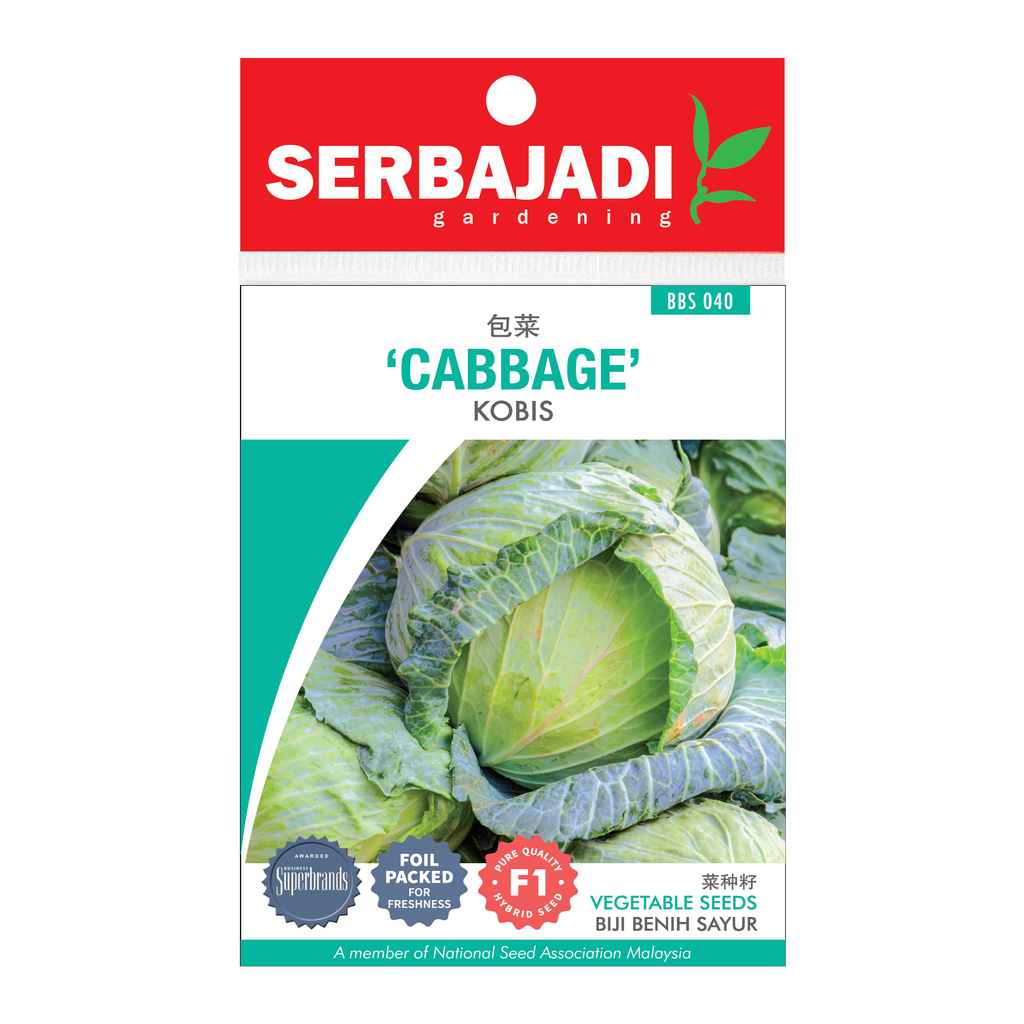Serbajadi F1 Hybrid Cabbage - Brassica oleracea L. var. capitata (L.) Alef
The cabbage family comprises a number of hardy vegetables. Cabbage is a biennial cruciferous veggie related to the turnip and radishes and it has a strong, distinct flavour. Medical studies show that cabbage loads of other nutrients and enzymes and it contains 22% protein. Cabbage can be eaten raw as salads or in coleslaw. Coleslaw is a salad of shredded raw cabbage. Finely shred cabbage leaves and steam until tender then serves with butter. Cabbage can b added to potato or vegetable soups and red cabbage takes on a new taste when slow cooked in the oven with butter, sugar, cooking apples and vinegar. The large leaves of cabbage can be stuffed. Use all the healthy outer, darker green leaves, as they contain most nutrients; a good source of vitamins A and C, along with other nutrients such as calcium, potassium, iron and phosphorus.
Type of vegetable: Leafy head
Edible parts: Leaves
DIRECTION OF USE
Best soil: Cabbages grow best in humus-rich, moist, crumbly loam soil that drains well, with pH of 6.0-6.5 in an open position with full light. Add humus or manure into soil at least 2 weeks before planting.
How to plant: Cabbages can be sown outdoors in situ or in seed trays for transplanting later. Sow outdoors in damp drills and thin out when the seedlings appear. When you transplant cabbage plants, water them in well. Apply fertiliser to the soil a week after sowing.
When to harvest: 90-100 days. Cabbages can be harvested at any stage, even as non-hearted greens.
How to harvest: Cut the cabbage stem close to the ground with a sharp knife. If you cut a cross into the cabbage stump you’ll get a cluster of small heads that you can eat. heads together with some mature leaves to protect them from being damaged. Cut deep within the plant to encourage the development of secondary heads.
Care: Cabbage is a heavy feeder that benefits from side dressings of compost and manure. Snap outer leaves over each curd to protect from the sun. Cover the plants with fleece to prevent butterflies from laying their eggs. Slugs, snails, aphids, and whiteflies all enjoy brassicas.
STORAGE
Keep away from children and pets.
Store in cool and dry place away from direct sunlight.

